Osprey Cam launches fifth nesting season
By Craig Griffeath
A little over seventy-five years ago, a visitor to the naval shipyards at Richmond’s Point Potrero would have encountered an impressive bustle of activity, with thousands of tough, dedicated “Rosie the Riveters” putting in long days on the heavy equipment at the yard in order to provide for their families. Today, at the historic Naval Shipyard No. 3, you can still see the last of the huge Whirley Cranes that once built the WWII Victory Ships there. And there’s still one tough, smart, dedicated Rosie there too, working hard atop the crane to raise her children. She’s an Osprey, and she’s also an Internet star whose fans are at the forefront of research into San Francisco Bay’s Osprey population.
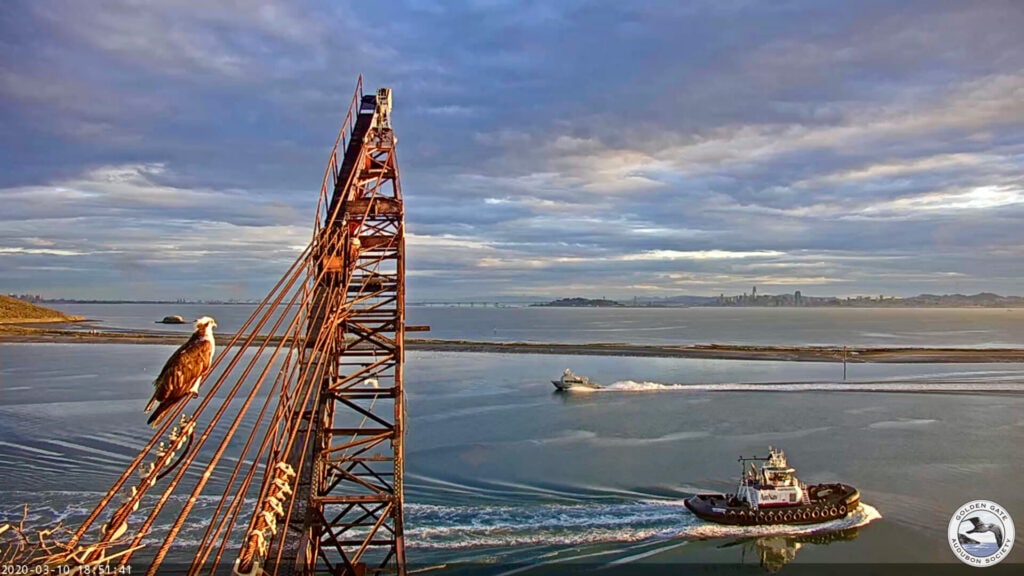
Just a few weeks ago, on February 18, Rosie completed her annual migration and returned to the Point Potrero Whirley Crane to reunite with her endearingly quirky mate Richmond, an event greeted with jubilation by the thousands of fans who follow the couple’s adventures on the Golden Gate Bird Alliance Osprey Cam at sfbayospreys.org. Fierce and charismatic in equal measure, Rosie and Richmond now command their own Facebook page, their own YouTube channel, and a remarkable network of volunteers and supporters who make up their broader human family.

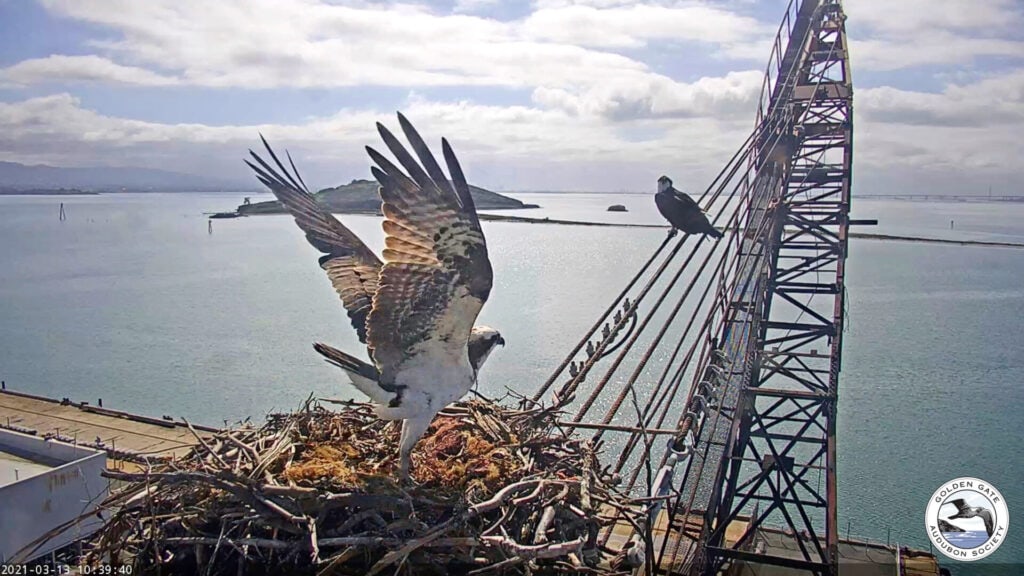
Rosie and Richmond’s success is emblematic of the larger success their species has enjoyed in recent decades. Among the most widely distributed of all bird species, Ospreys are voracious fishers who historically built their nests in the tops of trees next to water. In the 20th century, Ospreys faced existential threats from habitat reduction and pesticides such as DDT, but they’ve made a strong global recovery since the 1980s. Although there is now an extensive literature and a growing body of telemetry and webcam data documenting Osprey lives, our own San Francisco Bay populations are just beginning to be studied in detail, and many important facts—including their wintering location—are still a mystery. Today, Rosie and Richmond and the GGBA Osprey Cam viewers are helping to uncover the answers to some of these persistent questions.
Historically, there were very few reports of any Ospreys nesting on the shores of San Francisco Bay before the 1990s. Since then, an ongoing population survey conducted under the auspices of the Golden Gate Raptor Observatory has documented an Osprey boom, with active nests along the Bay shore increasing from 23 in 2013 to around 50 in 2020. A major reason for the birds’ success is their adaptability. Even while much of the Bay shoreline has been cleared for development, and despite the lack of suitable nesting trees, the Ospreys seem content to build their nests instead on light poles, electrical towers—or even WWII-vintage construction cranes. Today, nearly all the dozens of Osprey nests that dot the Bay are built on top of human-made structures.
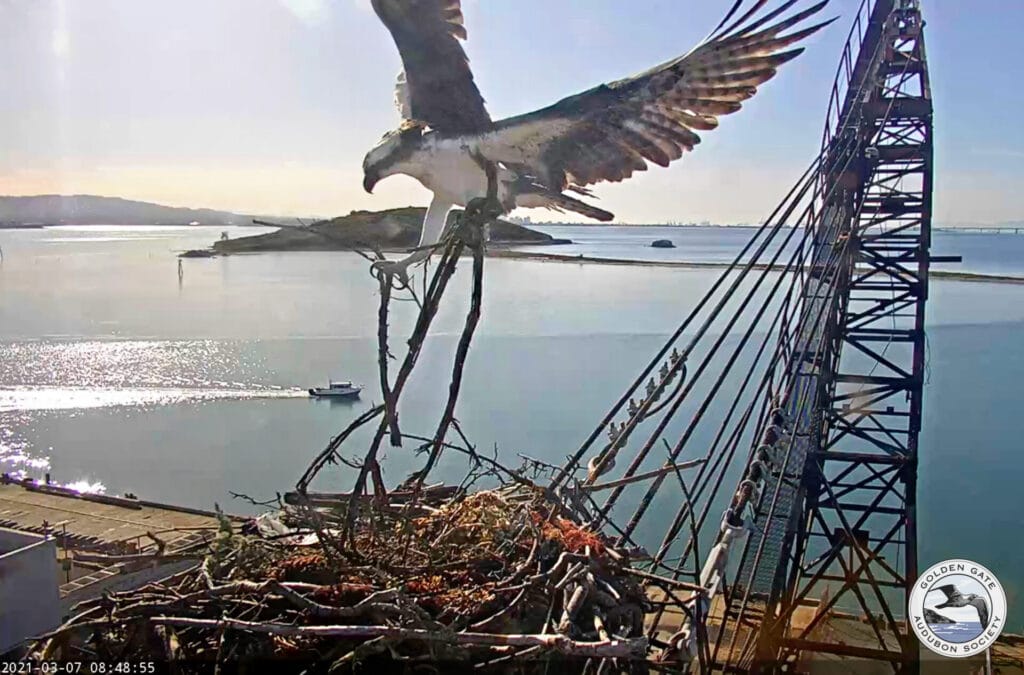
All of which, of course, presents challenges of its own. While nesting Ospreys are protected by law, nests are sometimes destroyed in the off-season if they’re in locations deemed disruptive or hazardous by property owners. Today, local monitors are working to develop partnerships—including several recent successes with Chevron in Richmond—to promote construction of alternative nesting platforms that are safer both for the birds and for industry.
For now, Rosie and Richmond must focus on the task at hand—preparing for this year’s eggs by gathering structural sticks and softer grasses for their massive four-foot-wide nest. Rosie normally lays three eggs around the first week of April, which hatch in the second week of May. The nestlings grow quickly, consuming large quantities of fish provided by Richmond, and will be nearly full adult size by the time they fledge in early July.

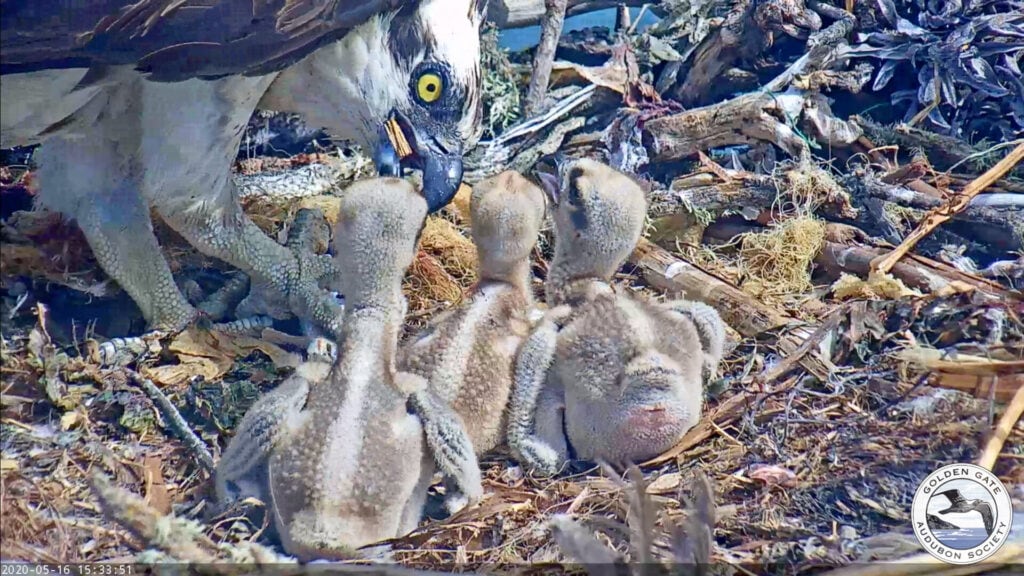
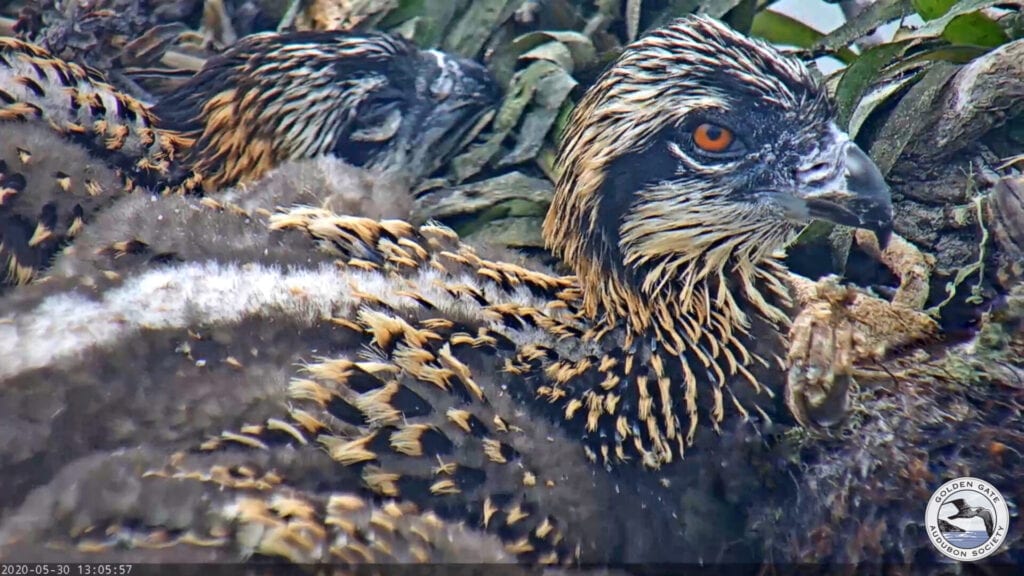
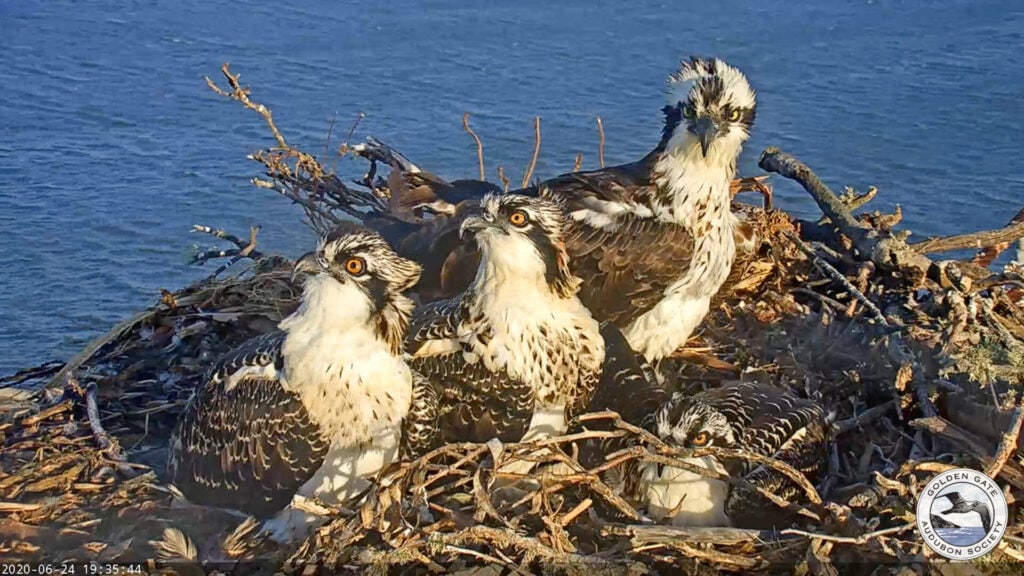
After fledging, the chicks will continue to visit the nest to beg for food from their parents until they depart for their first migration in late summer. Juvenile Ospreys generally spend around eighteen months in the south—perhaps as far away as Central America—before completing their first return migration in the second spring after departure.
For observers of the Whirley Crane nest, one of the most productive areas of research has been the Fish Matrix project, an ongoing real-time survey of the Ospreys’ diet. Since 2018, grassroots volunteers in an initiative established by Golden Gate Bird Alliance have been recording every fish brought to the nest—more than 700 fish each year, all organized by species and time of arrival. The data document seasonal patterns of fish consumption and give a unique Osprey’s-eye view of changing fish populations in the Bay over the course of the nesting season.
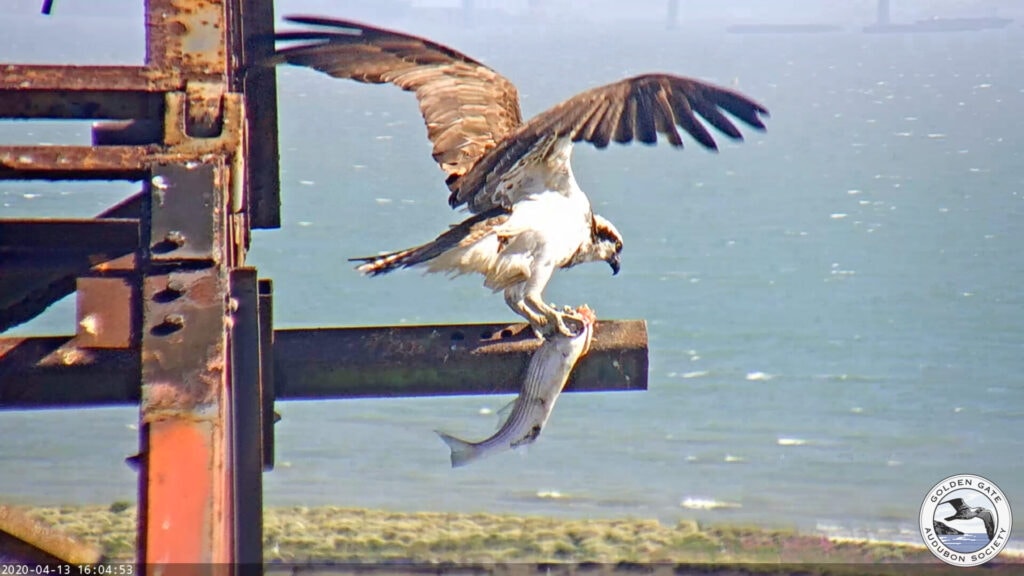
Anyone watching the nestcam may record the arrival of a fish simply by announcing it on the Live Chat page at sfbayospreys.org/live-chat. If you happen to be watching the Osprey Cam, stop by the Live Chat and maybe you’ll be able to call a fish too! Last year more than 50 individual viewers earned their place in the scientific record by pitching in to document fish deliveries. The Osprey Live Chat page has become a definitive repository of nest history and is the place to go for the very latest information on Rosie and Richmond. You can also find the last three years of accumulated Fish Matrix data there, updated daily. Site visitors may search, sort, or download any or all of the fish data for use in their own research or educational projects.
The work being done by GGBA Osprey Cam volunteers has been hailed as a flagship example of community science and a model for other nestcams to emulate. This year, as Rosie and Richmond prepare once again for the daunting task of raising their new brood from infancy to independence, their true-blue Internet fans are continuing to make cutting-edge contributions to science, enriching our understanding of these magnificent Bay residents.
View the nest cam and join the chat at sfbayospreys.org. Or for videos and highlights, and to stay abreast of Osprey activity, visit our Osprey Facebook page at www.facebook.com/bayospreys or our YouTube channel at www.youtube.com/channel/
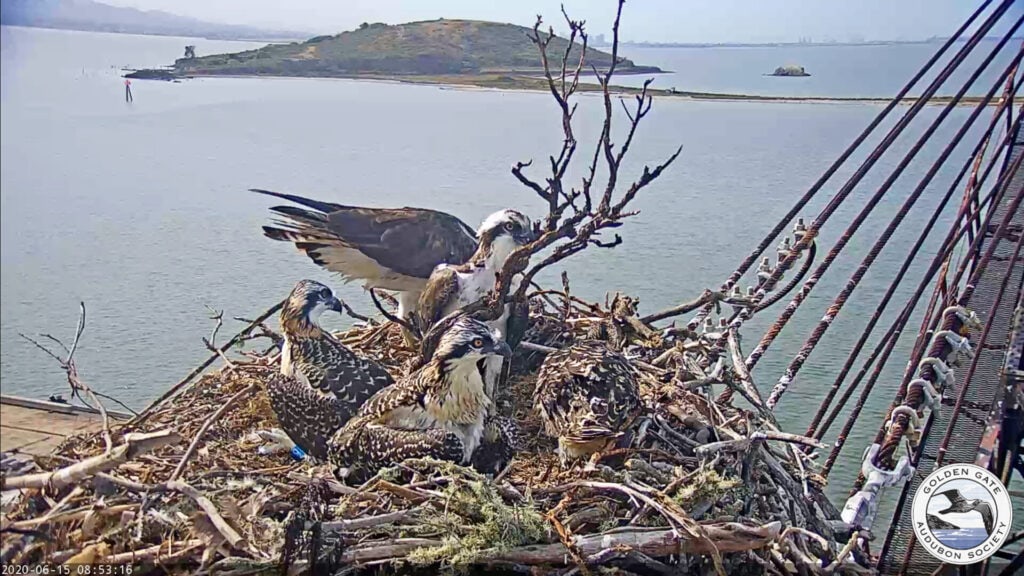
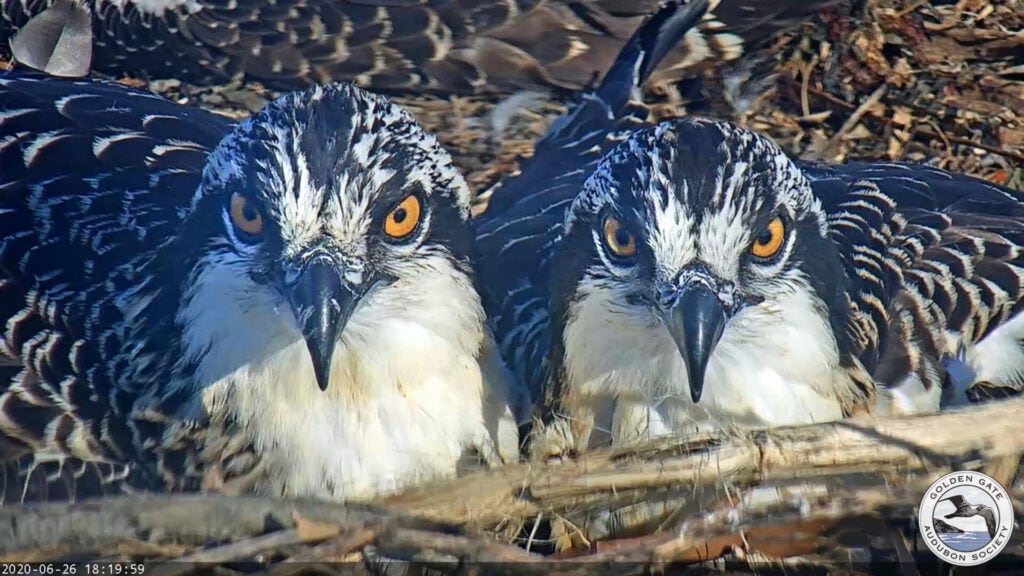
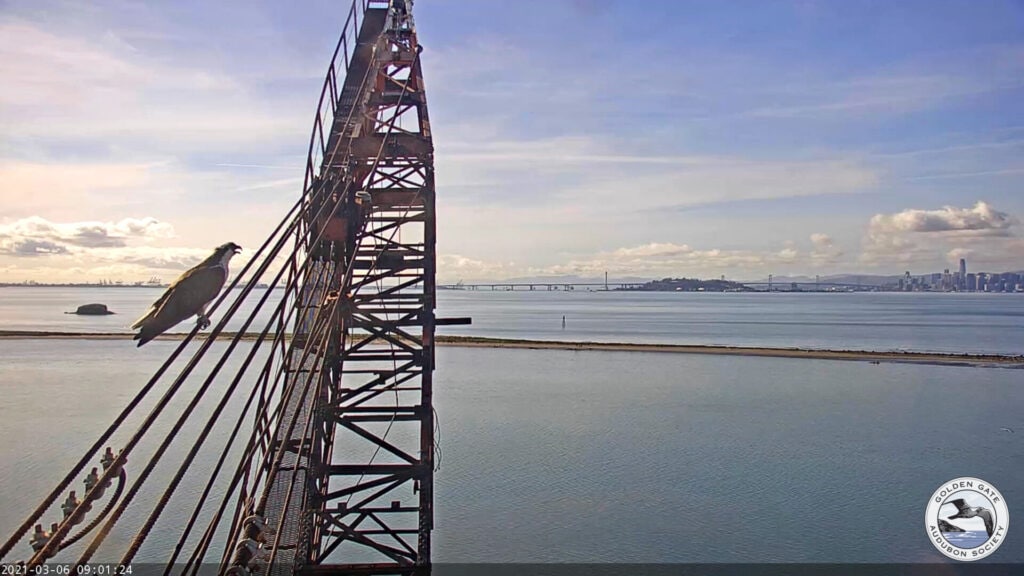
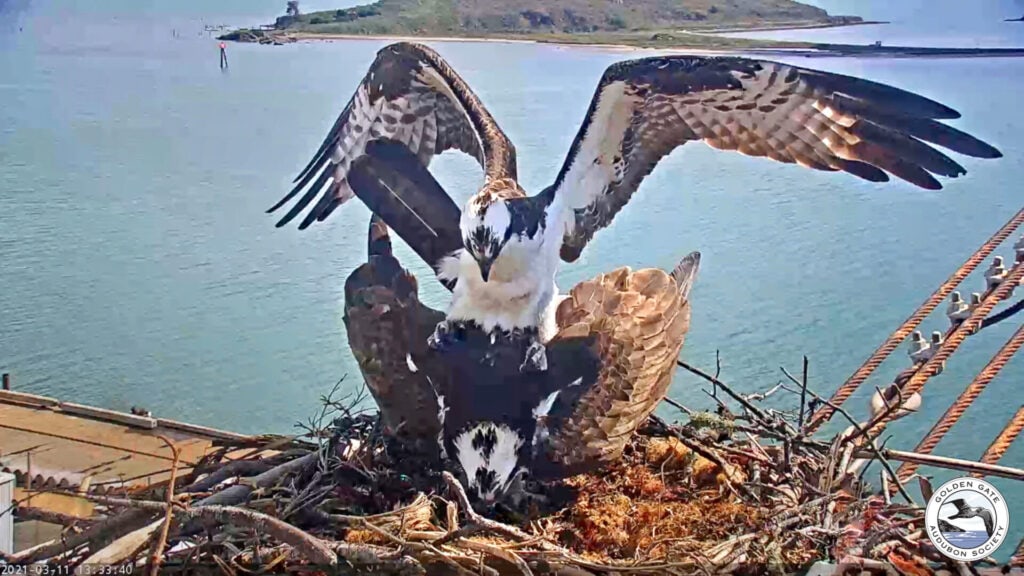
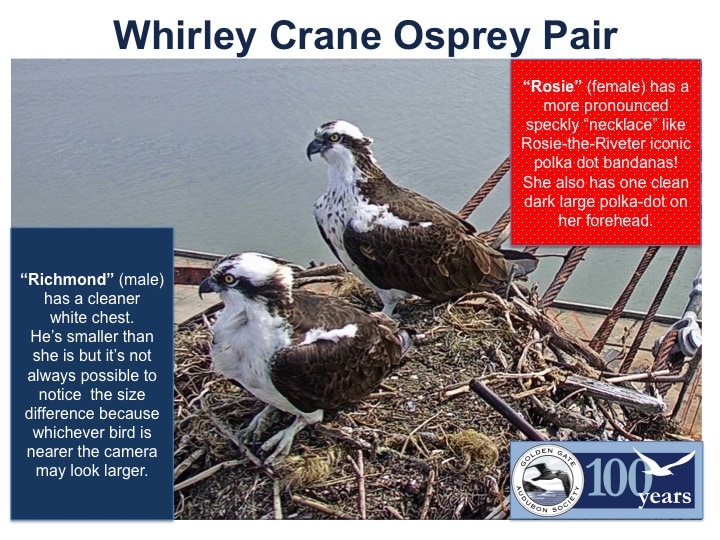
Craig Griffeath (or “craigor,” as he’s known in the Osprey Chat group) is a teacher, musician, and recently retired art historian living in Marin County. He has been an avid participant at SFBAYOSPREYS.ORG since its inception and when not keeping track of fish deliveries at the nest he now spends much of his time producing live and virtual programs celebrating the Ospreys and other birds in word and song.
